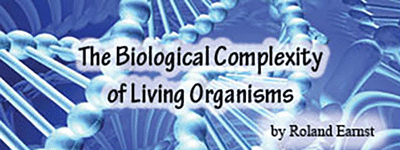Return to 1st Quarter 2024 articles.

Those who advocate for naturalistic evolution have a problem. Well, they have more than one, but this one is a math problem. In a publication on the National Institutes of Health's Pub Med website, Alexei A. Sharov presents a dilemma for evolutionists. Simply stated, the size of the genome indicates biological complexity in living organisms, while macro-evolution requires exponential growth to achieve that biological complexity.
Perhaps this will be easier to understand if we relate it to Moore's law in semiconductor technology. In 1965, Gordon Moore of Fairchild Semiconductors and Intel projected that the number of components in each integrated circuit would double yearly. In 1975, the prediction was revised to every two years. It took on the quality of a “law” as the semiconductor industry used it as their target for planning production. Moore’s law has led to technological changes that produced economic growth and social change. The point is that doubling the complexity of electronic technology means a logarithmic increase in versatility, as we have seen over the years.
Sharov applied that principle to evolution based on the exponential growth in biological complexity. Using the exponential increase of biological complexity in living organisms as a guide, it is possible to go backward in evolutionary time to see when life began. If the exponential hypothesis is true, tracing back in time, the origin of life would have been ten billion years ago. That is how long it would take for the genome to evolve to its present complexity in humans. No evolutionist or other scientist believes our planet is that old. That presents a math problem for naturalistic evolution.
So, what do Sharov and others propose as the solution? They call it “panspermia,” meaning that life came to Earth from outer space. Nobel Prize winners Fred Hoyle and Francis Crick advocated panspermia, but most evolutionary scientists reject it. Perhaps there is a better way to explain the fact that naturalistic evolution does not fit into Earth's timeline. The solution, soundly rejected by Hoyle and Crick, is the idea that a Creator outside of time and space designed the universe and life and put us on this planet for a purpose.
Picture credits:
© suravid/Bigstock.com
Scripture links/references are from BibleGateway.com. Unhighlighted scriptures can be looked up at their website.
